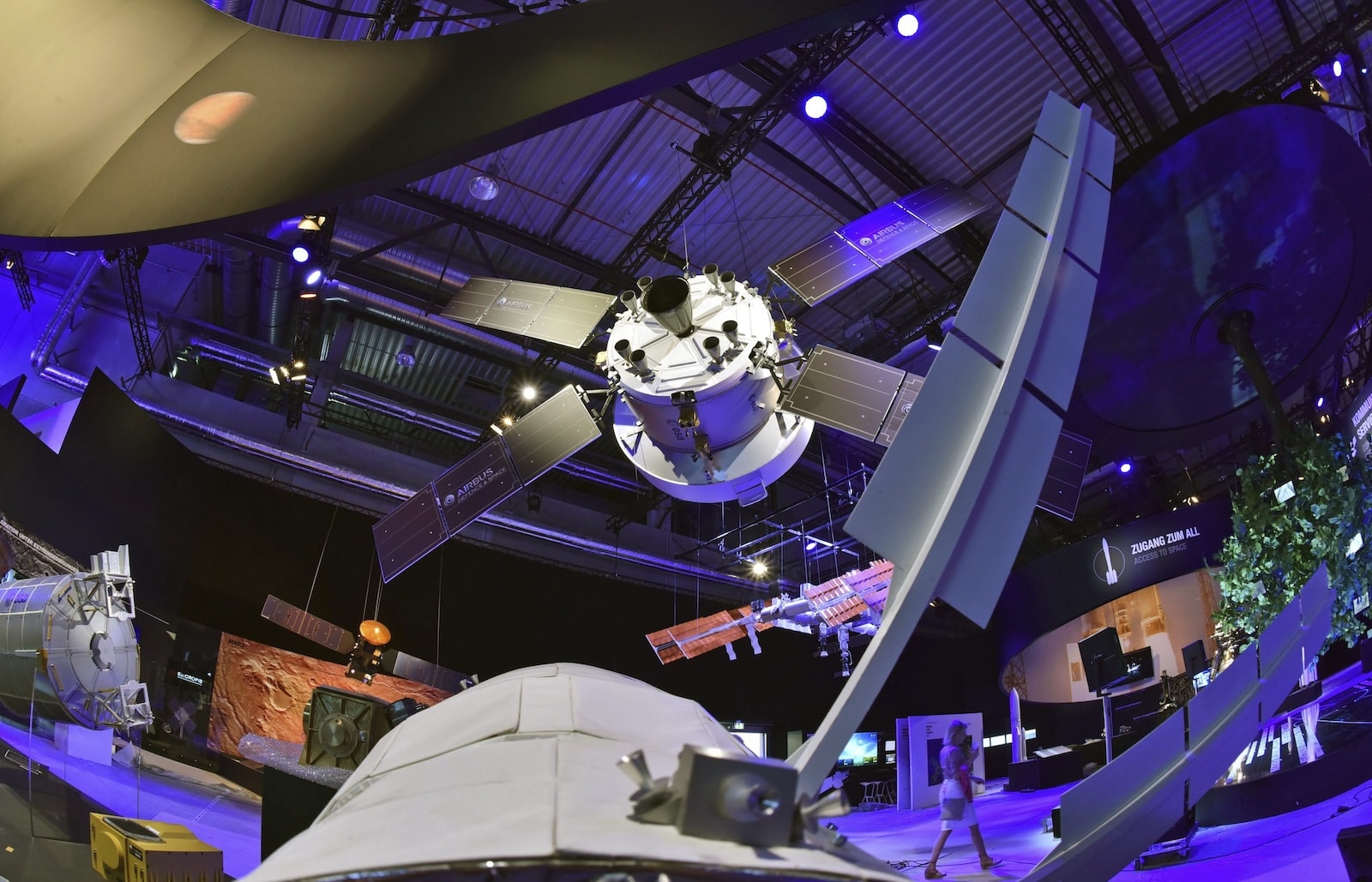Thursday, September 25, 2025
Known as space-based solar power (SBSP), this innovative technology has sparked a global race in which China, Japan, the United States, and Europe are competing to lead the search for an energy source that is as powerful as it is sustainable.
Photo: EFE - Ralf Hirschberger
Who would have thought that the new space race would be driven by the search for increasingly sustainable energy sources? Thanks to orbital solar stations, also known as solar satellites, which continuously capture the sun's energy in space and transmit it to Earth via microwaves or lasers, we can now harness what is known as space-based solar power (SBSP).
One of its main advantages is that, unlike ground-based panels, space systems can operate without interruption, achieving up to eight times greater efficiency. The European Space Agency (ESA) estimates that a single solar satellite could generate 2 GW of continuous power.
Despite technical challenges—such as building giant structures in orbit, efficiently converting energy, and safely transmitting it to Earth—there is a real possibility that energy generation in space could become a reality in the coming decades. China, Japan, the United States, and the European Union, through their space agencies (NASA, ESA, and JAXA) and private companies such as Lockheed Martin, Airbus, SpaceX, and Blue Origin, are investing in research and development to lead this new space race.
In Europe, the European Space Agency approved the Solaris program in 2023, with the aim of converting SBSP solar energy into a sustainable and scalable energy source. Collaboration between space companies, energy suppliers, and political actors, along with an investment of €4.7 billion, could make this project a reality by 2027.
For its part, Airbus Defence is leading the development of modular three-square-kilometer ground antennas that can be integrated with conventional solar farms. Similarly, the Thales/Alenia consortium is busy building innovative and flexible observation satellites based on SAR (synthetic aperture radar) and optical technology.
In addition, NASA, as part of the ARMADAS (Automated Reconfigurable Mission Adaptive Digital Assembly Systems) system, has already begun testing autonomous assembly robots to build giant antennas, solar panels, and habitats on the Moon. In 2024, they succeeded in erecting a shelter the size of a shed without extensive human supervision.
The real technological leap
If there is one innovation that can overcome the technical barriers to the development of this energy source, it is microwave or laser transmission. To address the challenges of transporting and deploying space-based solar power, Caltech's MAPLE (Microwave Array for Power-transfer Low-orbit Experiment) experiment demonstrated in 2023 the feasibility of sending 1 kW of power 50 meters away with 60% efficiency. This feat was achieved thanks to the deployment of flexible energy transmitters powered by low-cost technologies.
For its part, SpaceX, through its Starlink project, is rolling out a constellation of satellites in low Earth orbit to provide high-speed, low-latency internet access. Although these satellites are primarily designed for communications, many of them use solar panels for their operation, making them solar satellites in a sense. Building on this technology, research is already underway on the feasibility of using solar satellites in geostationary orbit (around the Earth) to generate energy and transmit it to the planet.
Although the concept seems like something out of science fiction, several countries have already set firm deadlines. China plans to launch a 100 kW pilot plant by 2028; the United Kingdom aims to have an operational system by 2035; and the US Space Force has identified 36 key technologies to be developed by 2040. Cost remains the biggest barrier.
All these advances confirm that on the road to the energy transition, space is no longer a frontier, but an opportunity.
¿Te ha parecido interesante?





